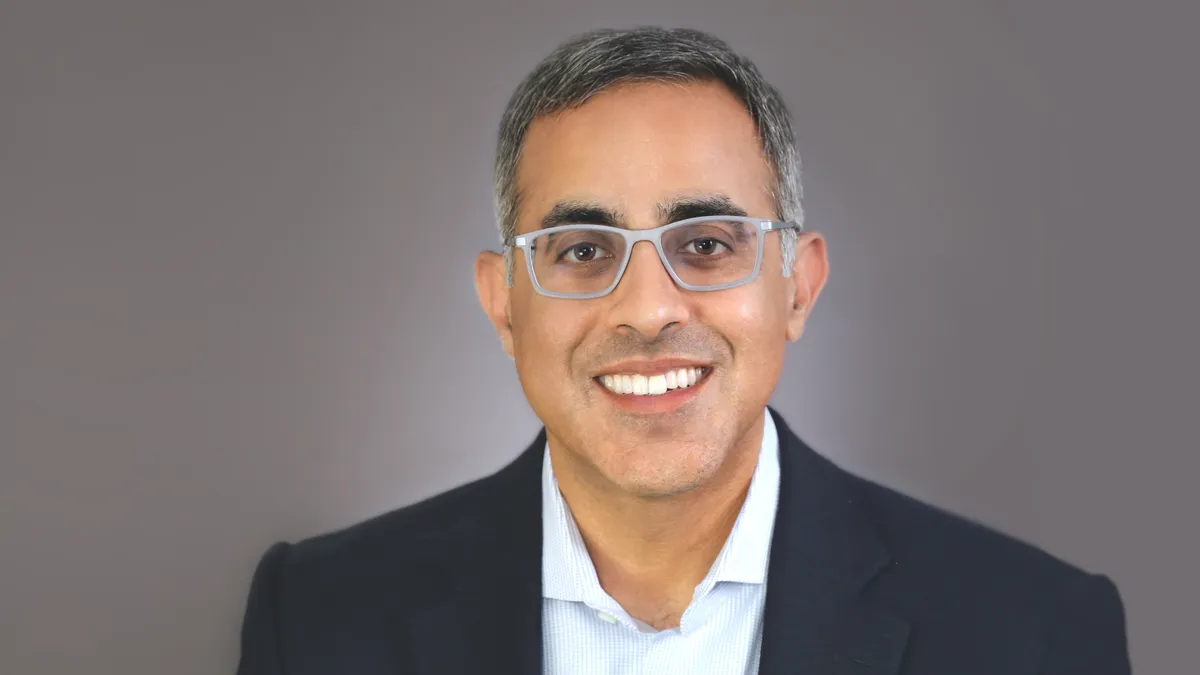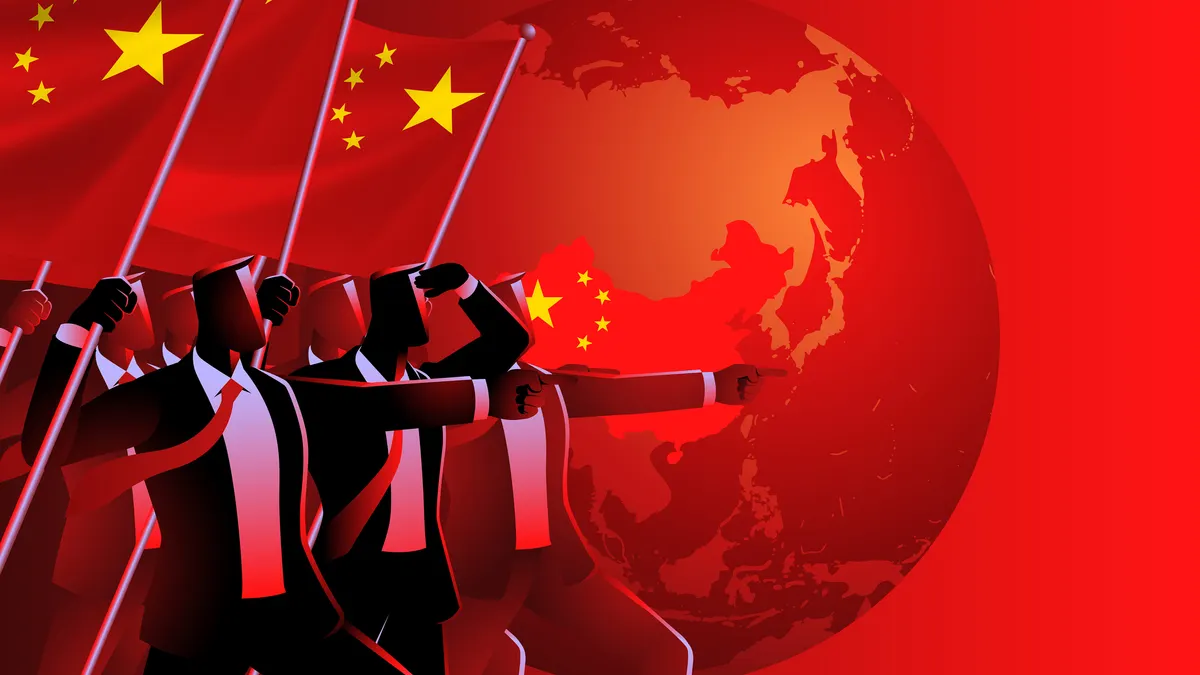Buzz has been building in the antibody-drug conjugate (ADC) space as more of the targeted cancer therapies receive the regulatory go-ahead. So far, 14 ADCs, which work by delivering highly potent toxins directly into cancer cells, have been approved worldwide and around 100 have entered clinical trials.
Now considered one of the fastest growing sectors of oncology, ADC developers also appear poised for major deals.
In late summer, rumors of a potential acquisition between Merck and Seagen, a leading developer of ADCs, set the investment world alight over what could become the biggest pharma deal in years. (The buyout, which has an estimated value of about $40 billion, was stalled in late August, reportedly due to price negotiations.)
For Ameet Mallik, who recently took the helm as CEO of Switzerland-based ADC Therapeutics, another giant in the sector, this excitement could be just the beginning.
“I believe there’s huge potential for what ADCs are going to be able to deliver in the future,” he said.
With its proprietary platform based on targeted pyrrolobenzodiazepine (PBD) dimer technology, ADC Therapeutics is advancing a pipeline of novel candidates that includes eight in preclinical or clinical trials for several cancer indications and a treatment called Zynlonta, which won an accelerated approval for a type of lymphoma last year.
To capitalize on the potential of its platform and therapeutics, ADC Therapeutics brought Mallik aboard to lead in May. A longtime industry pro and former executive vice president and head of US oncology at Novartis, Mallik was tapped to steer the company — which has nearly tripled its staff to about 330 employees in the last few years — through a transformational time of commercial growth.
This first phase of his tenure has been eventful. In addition to hiring a new chief business and strategy officer, the company has embarked on several new clinical trials, including a study for B cell lymphoma patients over the age of 80, which ADC Therapeutics calls “a growing population that is significantly underserved and often excluded from first-line cancer studies.”
Another major focus for Mallik is exploring ways its technology — often described as a “magic bullet” in oncology — can be expanded into other indication areas that would benefit from the potential of the approach.
Here, Mallik discusses how his professional journey — including a phase 3 failure — prepared him for this role, and the new horizons ADCs could reach.
PHARMAVOICE: What has the learning curve been like for you coming into this role?
AMEET MALLIK: When I left Novartis, I’d been there for over 16 years in a number of different roles. Then I took on the CEO role at Rafael Holdings, which had a pancreatic cancer drug in trials. Unfortunately, the drug didn’t work — and it was in phase 3.
I left that job at the end of January after nine months, then stayed on the board. So, I’d say this is my first major opportunity as a CEO. And it is a learning curve.
There are experiences to draw upon from my past. We’re still in the launch of our first product and that’s familiar territory. And other aspects related to drug development and manufacturing are typical and what you’d deal with in a big company.
But the biggest pieces that are new are working with the investors and capital markets. And the second biggest piece is aligning with the board.
What did you learn from the experience of navigating a phase 3 failure in oncology?
About 10 years ago, I worked with a leadership coach and he said, ‘You’re asking, what can I achieve?’ And that's pretty typical when you are a good student and you want to go to good schools, and work for a good employer and achieve more success. It’s about personal orientation and success in the early parts of your career. But he said, ‘Change the question to: What impact can I have with my career? Because your career doesn't last forever.’ And that got me on a journey of personal transformation, and a journey around impact. It helped me move away from external validation, personal success, personal achievement, to: How do I want to use whatever talent, whatever energy I have to drive impact for others?
And so, 10 years ago, that failure would have been a lot more devastating for me. But now (I thought), if you're not willing to take chances and some level of risk, it's hard to do things that are really groundbreaking. And I don't regret the move I made because the phase 1 data looked really remarkable, and if the phase 3 data had played out there would have been a complete breakthrough in pancreatic cancer, which has such a high unmet need and patients with a poor prognosis.
But I learned so much through the experience. I learned a lot about financing the company and how to pivot from a tough situation. So, in many ways, it helped me develop more resiliency and recommit myself to wanting to do something meaningful for patients.
Tell me about ADC Therapeutics’ technology. Why does it stand out from competitors in the space?
We are one of the few companies that has brought a product all the way from discovery in a lab to market. And with over a decade of experience, we’ve gained a lot of capabilities along the way. You learn a lot by doing things well, but also by making mistakes. Our drug that was approved, Zynlonta, uses a very potent payload called a PBD. Others have tried using PBD technology and have not been successful — it's been problematic, it's highly potent, and tough to deal with because if there's any leakage you can create systemic exposure and toxicity that makes the safety aspect intolerable.
"Where we see the opportunity in the ADC space is to innovate across all the different components."

Ameet Mallik
CEO, ADC Therapeutics
For patients that are relapsed and refractory in cancer, they've already developed resistance to a lot of drugs, and those types of cancers are much harder to treat. Our technology is like other ADC approaches — you have an antibody that's targeting a cancer cell more than healthy cells. But what's unique about our toxin is that with very small quantities, once the ADC is internalizing, the toxin integrates into the minor groove of the DNA and forms a potent, covalent crosslink. Because it evades detection, the DNA repair mechanism stops working which leads the cell to apoptosis, the basis of cell death. So, with very small quantities, as long as we can manage the systemic exposure, which is what others weren't able to do, you can deliver this toxin into relapsed and refractory cancer cells. We've seen really potent responses not only in terms of cell death that we can cause, but also the bystander effect from the toxin impacting other cancer cells in the area. We’ve built a robust pipeline with this technology.
What other opportunities exist in drug development with ADCs?
Where we see the opportunity in the ADC space is to innovate across all the different components. With ADCs, there's the antibody construct, the linker and then the drug. For the whole industry, including ourselves, the drug component has been a toxin — basically it’s been a targeted way to deliver chemotherapy to cancer cells. But when you look at the technology, you can go much more broad than that. There could be other drugs like immunostimulants, protein degraders or other drug combinations that can work.
We're doing a lot to innovate beyond the payload that we've built our pipeline with and looking at innovating the other components — the antibody constructs and the linkers. And we believe that having a broader platform with a broader toolbox will help us effectively reach a larger number of biological targets and diseases.
Which disease classes could ADC technology best target?
The most obvious are of course cancer and then autoimmune diseases. I think there is a lot of potential with novel targets as well as validated, existing targets.
What kind of leadership lessons are you leaning on to drive your company’s growth?
Earlier in my career as a leader, I wanted to add value by having all the answers. But as I developed, I realized by being curious and suspending judgment, I could often get the best answers from the wisdom of my team.
In my first three months, I spent the large majority of my time engaging with employees, physicians, investors and different stakeholders. Beyond the formal interactions, it's been about engaging with employees and having a true two-way dialogue. People don't like to be talked to — they want to be engaged in a conversation. And we want to build a culture with a collective set of values, behaviors and mindset. But I don't create the culture — we collectively create it.
















